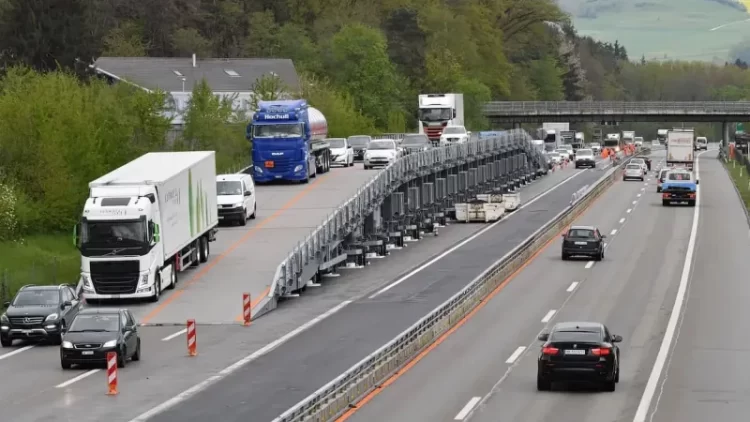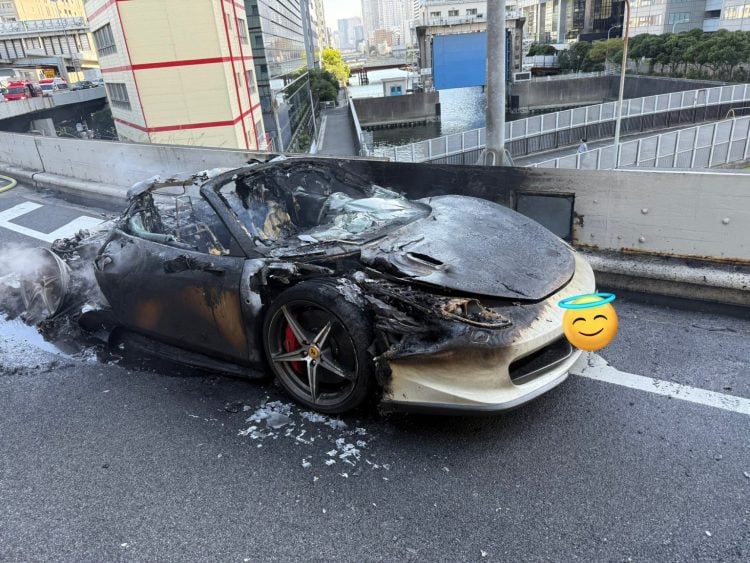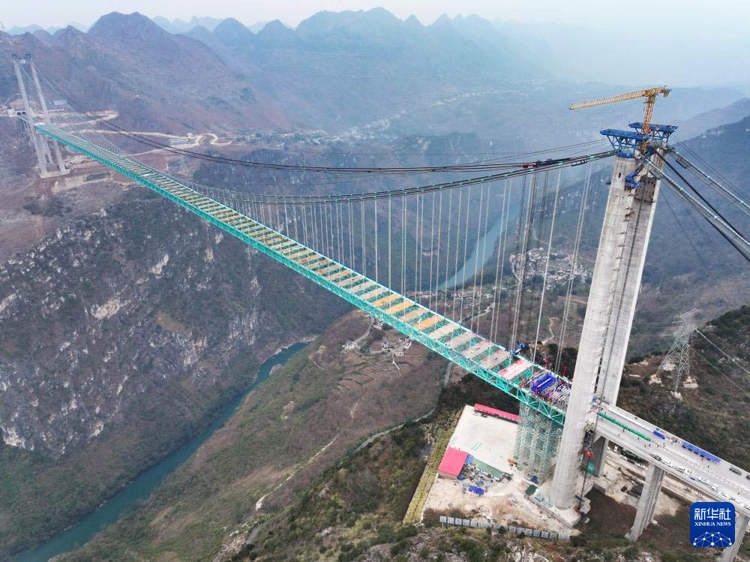Switzerland’s road maintenance authority has developed an ingenious mobile bridge that allows the paving of public roads without the need to stop traffic on the affected lanes.
Traffic jams are a necessary evil when it comes to road maintenance, and despite experts’ best efforts to come up with a solution to this logistic problem, motorists still have to deal with them whenever road work is required. However, Switzerland’s Federal Roads Office may have come up with an ingenious-enough solution to revolutionize road paving. Earlier this year, it unveiled the Astra Bridge, a 257-meter-long mobile bridge that allows traffic to pass over sections of road while infrastructure is being repaired below. It’s such a simple concept that it almost makes you wonder why engineers took so long to invent it, but there is a reason why the Astra Bridge is the first of its kind – it’s not as simple as it sounds.

Astra Bridge project manager Jürg Merian, aka ‘Mr. Astra Bridge’, was inspired by a fly-over ramp he saw in Austria, more than a decade ago. The modular contraption had been built by the Waagner Biro company for the country’s national road office, Asfinag, and consisted of several parts that could be placed over sections of road, allowing cars to pass over while workers carried out repairs underneath. Switzerland ended up ordering one such fly-0ver ramp, but Merian wasn’t completely satisfied with it.
While the fly-over ramp was certainly usable, it had serious disadvantages. First of all, it wasn’t mobile, so moving the modules from one place to the next was anything but simple, and the working conditions for the people toiling away under it were very poor. The space under the ramp was only 1.6 meters, so workers taller than that had to watch their heads at all times, and the road noise measured in that space sometimes surpassed 100 decibels.
A few years ago, Jürg Merian set out to improve the fly-over ramp concept, and the Astra Bridge 1.0 was born. The structure was placed on wheels, and the top section was better insulated so that road noise wasn’t such a big issue. It was also considerably wider (5 meters) and taller ( 3 meters). Sadly, it had other shortcomings that ultimately made it a failure. During its trial run in 2022, the Astra Bridge had to be dismantled due to public pressure, even though only a quarter of the scheduled maintenance work had been completed. The steep ramp leading up the bridge made trucks and other lower vehicles slow almost to a standstill, creating kilometers of traffic backlog.
The new version has a drastically reduced ramp gradient of 1.25 percent, compared to the previous one (6.1 percent), making it easy to drive on it at the recommended speed of 60 km/h. It has been used in Recherswil, Solothurn, for weeks now with virtually no traffic backlogs. It’s still not perfect, as many motorists don’t expect a 257-meter-long bridge to appear in the middle of the motorway and slow down more than they have to, while others on the adjacent lanes do the same just to gawk at the Astra Bridge and the workers underneath it. Still, the mobile bridge is considered a success.
Apart from preventing traffic jams and backlogs, the Astra Bridge also shields workers from the sun and rain and eliminates the need for them to work at night when road traffic is lighter. Five offers were received from construction companies for the segment of motorway where the Astra Bridge was used, more than usual, because many companies avoid projects that require nocturnal work.
The Astra Bridge has to be assembled on the road that needs paving, then towed at a speed of 0.5 km/h from one segment to the next, and while workers only manage to pave half the surface they normally would if the road segment was closed, but Switzerland’s Federal Roads Office considers that the benefits of using the Astra Bridge outweigh the disadvantages.
The Astra Bridge was only unveiled a few weeks ago, but countries like Norway, Germany, and the Netherlands have already expressed interest in it. Switzerland’s road authority is willing to share the technology. There is no patent registered for it and no plans to apply for one, as “it is not the job of a federal company to conduct profitable business”.






